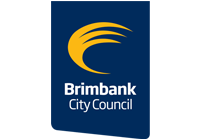St Albans (North)
Proficiency in English
In St Albans (North) in 2021, 2,195 females who spoke a language other than English at home reported difficulty speaking English.
Proficiency in English measures the self-assessed proficiency in spoken English of people who speak a language other than English at home. The data, when viewed with other ethnic and cultural indicators, such as Ancestry, Country of Birth, Language Spoken at Home and Religion, reflects St Albans (North)'s ethnic composition and how long the overseas born have been in Australia. This helps service providers determine whether they need to communicate with the local population in languages other than English.
Derived from the Census question:
'How well does the person speak English?'
Total population
| Proficiency in English | ||||||||
|---|---|---|---|---|---|---|---|---|
| St Albans (North) - Total females (Usual residence) | 2021 | 2016 | Change | |||||
| English proficiency | Number | % | City of Brimbank % | Number | % | City of Brimbank % | 2016 to 2021 | |
| Speaks English only | 2,262 | 22.2 | 35.2 | 4001 | 2,500 | 25.0 | 35.1 | -238 |
| Speaks English well or very well | 4,897 | 48.0 | 43.4 | 4002 | 4,688 | 46.9 | 43.6 | +209 |
| Speaks English not well or not at all | 2,195 | 21.5 | 15.7 | 4003 | 2,025 | 20.2 | 15.3 | +170 |
| Not stated | 848 | 8.3 | 5.7 | 4005 | 793 | 7.9 | 6.0 | +55 |
| Total population | 10,202 | 100.0 | 100.0 | 10,006 | 100.0 | 100.0 | +196 | |
Source: Australian Bureau of Statistics, Census of Population and Housing (opens a new window) 2016 and 2021. Compiled and presented by .id (opens a new window)(informed decisions).

Compiled and presented in profile.id by .id (informed decisions).

Compiled and presented in profile.id by .id (informed decisions).
Dominant groups
Analysis of the proficiency in English data of the female population in St Albans (North) in 2021 compared to City of Brimbank shows that there was a lower proportion of females who spoke English only, and a higher proportion of females who spoke another language and English not well or not at all.
Overall, 22.2% of females spoke English only, and 21.5% spoke another language and English not well or not at all, compared with 35.2% and 15.7% respectively for City of Brimbank.
Emerging groups
The most significant changes in the proficiency in English of the female population in this area between 2016 and 2021 were in those speaking:
- Speaks English only (-238 females)
- Speaks English well or very well (+209 females)
- Speaks English not well or not at all (+170 females)
